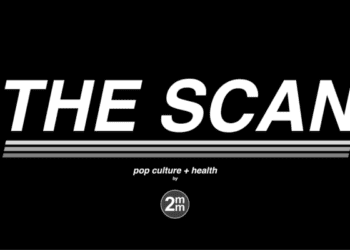Wellness Check: Sleep
Several exercise modalities improve sleep quality in patients with sleep disorders
1. In this systematic review and network meta-analysis, mind-body exercise, moderate aerobic exercise combined with light strength exercise, and moderate aerobic exercise alone were more effective than passive controls in improving sleep quality in those with sleep disorders.
2. However, the most effective treatment for improving sleep quality was mind-body exercise combined with treatment as usual.
Evidence Rating Level: 1 (Excellent)
Sleep disorders are highly prevalent and can be associated with impaired health and lower quality of life. Exercise has been investigated as a potential low-cost and easily accessible treatment to aid those with sleep disorders. Although prior studies have suggested a benefit of exercise in improving the symptoms of sleep disorders, there is still much to be discovered regarding the benefits of different exercise modalities on sleep quality in these patients. Thus, this study aimed to assess the current literature on the impact of various exercise types on sleep quality in patients with sleep disorders.
This systematic review and meta-analysis included 17 randomized controlled trials (n=1,090 participants) from database inception to April 8, 2023. Studies were included if they investigated patients with sleep disorders, including insomnia, sleep apnea, hypersomnia, circadian rhythm disturbances, and parasomnias, had an intervention group that received aerobic, strength, or mind-body exercise, a control group that received treatment as usual, placebo, wait-list, or other non-pharmacological interventions, and reported on sleep quality. Studies were excluded if the interventions involved pharmacologic treatment or if participants engaged in night-shift work. The risk of bias was assessed using the Cochrane Risk of Bias tool, and the review was carried out in accordance with PRISMA guidelines. The primary outcome was the association between sleep quality and various exercise modalities.
The results demonstrated that there was moderate-to-low certainty evidence to suggest that mind-body exercise, moderate aerobic exercise combined with light strength exercise, and moderate aerobic exercise alone were more effective than passive controls in improving sleep quality in patients with sleep disorders. However, the most effective treatment for improving sleep quality was mind-body exercise combined with treatment as usual. These results remained consistent after accounting for potential modifiers, such as region, age, and type of sleep disorder. However, the review was limited by the fact that most of the study participants were female, which may have affected the generalizability of the study findings. Nonetheless, the present study demonstrated that a wide range of exercise modalities can be effective in improving sleep quality in patients with sleep disorders.
Sleep time may mediate the relationship between body fat and hepatic steatosis in young people
1. In this cross-sectional study, the association between sleep time and hepatic steatosis index (HSI) was dependent on body mass index (BMI).
2. However, analyses showed that sleep time may explain 39% of the relationship between body fat distribution and HSI.
Evidence Rating Level: 3 (Average)
It is well known that sleep is a factor associated with adiposity in young people, as inadequate sleep time is associated with an increasing risk of developing overweight or obesity. Overweight and obesity pose health threats, not least of which is non-alcoholic fatty liver disease (NAFLD), which is a leading cause of liver disease in pediatric populations. However, there is limited research into the role that sleep may have on the development of liver disease in young people. Therefore, this study aimed to assess the interplay between sleep, overweight and obesity, and liver disease in children and adolescents.
This cross-sectional study included 854 children and adolescents who participated in a previous longitudinal study. Participants were included if they were 2-18 years old and had overweight or obesity, according to body mass index (BMI) criteria outlined in the International Obesity Task Force. BMI, body circumference, waist circumference, blood pressure, and body fat distribution were assessed. Blood tests were used to evaluate biochemical and hepatic markers, and sleep data was collected via structured interviews. The hepatic steatosis index (HSI) was used to assess hepatic steatosis throughout the study. The primary outcome was the association between sleep, anthropomorphic measures, and HSI.
The results demonstrated a significant inverse correlation between HSI and sleep time. However, the association between sleep time and HSI was dependent on BMI, whereby HSI decreases in children with obesity as sleep time increases. In contrast, sleep demonstrated no effect on HSI in those with overweight. Sleep time influences the relationship between body fat distribution and HSI, as 39% of the association between these factors was mediated by sleep time. However, the study was limited by the low validity of some of the hepatic markers used, which may have impacted the findings. Nonetheless, the present study demonstrated that sleep may be an important factor in preventing liver disease in young patients with overweight or obesity.
1. In this cross-sectional study, participants who engaged in weekend catch-up sleep had a lower prevalence of cardiovascular disease than those who did not.
2. However, this was most prominent in participants with an average weekday sleep duration of <6 hours and a weekend catch-up sleep duration of >2 hours.
Evidence Rating Level: 3 (Average)
Limited sleep duration is a risk factor for several medical conditions, including cardiovascular disease. Although over a third of Americans get less than the recommended minimum sleep duration, this is often supplemented by a longer sleep duration on weekends, known as weekend catch-up sleep. Weekend catch-up sleep has been implicated in a number of conditions, including obesity and hypertension, which may place individuals at greater risk for developing cardiovascular disease. However, the impact of weekend catch-up sleep on cardiovascular disease risk has not been well studied. Therefore, the present study aimed to understand the relationship between weekend catch-up sleep and cardiovascular disease.
This cross-sectional study included 3,400 participants aged 20 years or older who completed the 2017-2018 National Health and Nutrition Examination Survey (NHANES). Participants were excluded if they had missing information for the following survey categories: education, living with a partner, diabetes mellitus, hypertension, annual family income, sleep time, cardiovascular disease, smoking, and drinking. Information on sleep, cardiovascular disease, and demographics was obtained from the NHANES. The weekend catch-up sleep was calculated by subtracting the average number of hours slept on weekdays from the average number of hours slept on weekends. Weekend catch-up sleep was defined as a difference in sleep duration of >1 hour between weekdays and weekends. The primary outcome was the association between weekend catch-up sleep and cardiovascular disease prevalence.
The results demonstrated a significantly lower prevalence of cardiovascular disease in those who engaged in weekend catch-up sleep than those who did not. In those that slept <6 hours on weekdays and had >2 hours of weekend catch-up sleep, the odds ratio for cardiovascular disease prevalence was significantly lower than in other subgroups. However, the study was limited by the self-reporting of sleep duration, which may have introduced bias. Nonetheless, the present study suggested that in those who average <6 hours of weekday sleep, weekend catch-up sleep could be beneficial in reducing the risk of cardiovascular disease.
Image: PD
©2023 2 Minute Medicine, Inc. All rights reserved. No works may be reproduced without expressed written consent from 2 Minute Medicine, Inc. Inquire about licensing here. No article should be construed as medical advice and is not intended as such by the authors or by 2 Minute Medicine, Inc.







